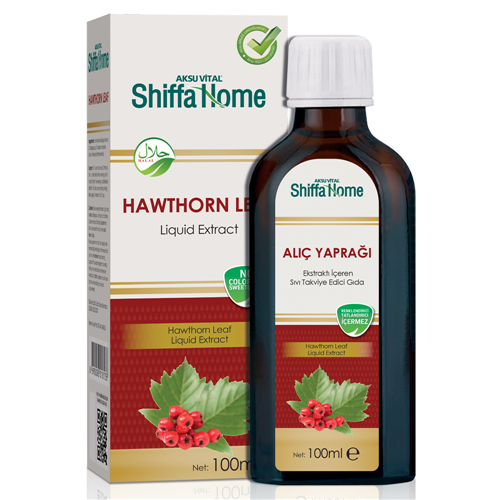




SHF Hawthorn Leaf Liquid Extract
Details:
What is Hawthorn?
Hawthorn is a spiny bush or small tree. It has strong-smelling white flowers and bright red spherical fruit containing 1 to 3 nuts.
What is it used for?
Traditional/Ethnobotanical uses
The use of hawthorn dates back to the Greek physician Dioscorides. Hawthorn has been traditionally used as a diuretic for kidney and bladder disorders, to treat stomach ache, stimulate appetite, and improve circulation. Other traditional uses for hawthorn include treatment of stress, nervousness, and sleep disorders.
Preparations containing hawthorn remain popular in Europe for the treatment of high or low blood pressure, tachycardia, or arrhythmias, with the revised Complete German Commission E Monographs approving the use of leaves and flowers for the treatment of long-term heart failure. Some acceptance has also been gained in the United States, with clinical trials being conducted in heart failure.
General uses
Hawthorn may have a role as adjunctive therapy in mild heart failure and exhibits some advantages over digoxin. In more severe cases of congestive heart failure (CHF), its place in therapy is less clear. Studies in animals suggest that hawthorn extracts exert effects on the CNS, including relief of anxiety and pain; however, clinical studies are limited. Although limited clinical studies have shown improvement in high cholesterol with hawthorn extracts, specific, well-designed trials are needed before hawthorn extracts can be recommended.
What is the recommended dosage?
Trials have evaluated dosages ranging from 160 to 1,800 mg/day standardized extracts (mostly WS 1442) in divided doses over 3 to 24 weeks. A minimum effective dose for adjunctive therapy in mild CHF is 300 mg of standardized extract daily, and maximum benefit appears after 6 to 8 weeks of therapy. Clinical trials conducted in patients with class II and III CHF found hawthorn extract 900 mg daily to be safe, but not better than placebo.
Package: 100 ml glass bottle x 6

